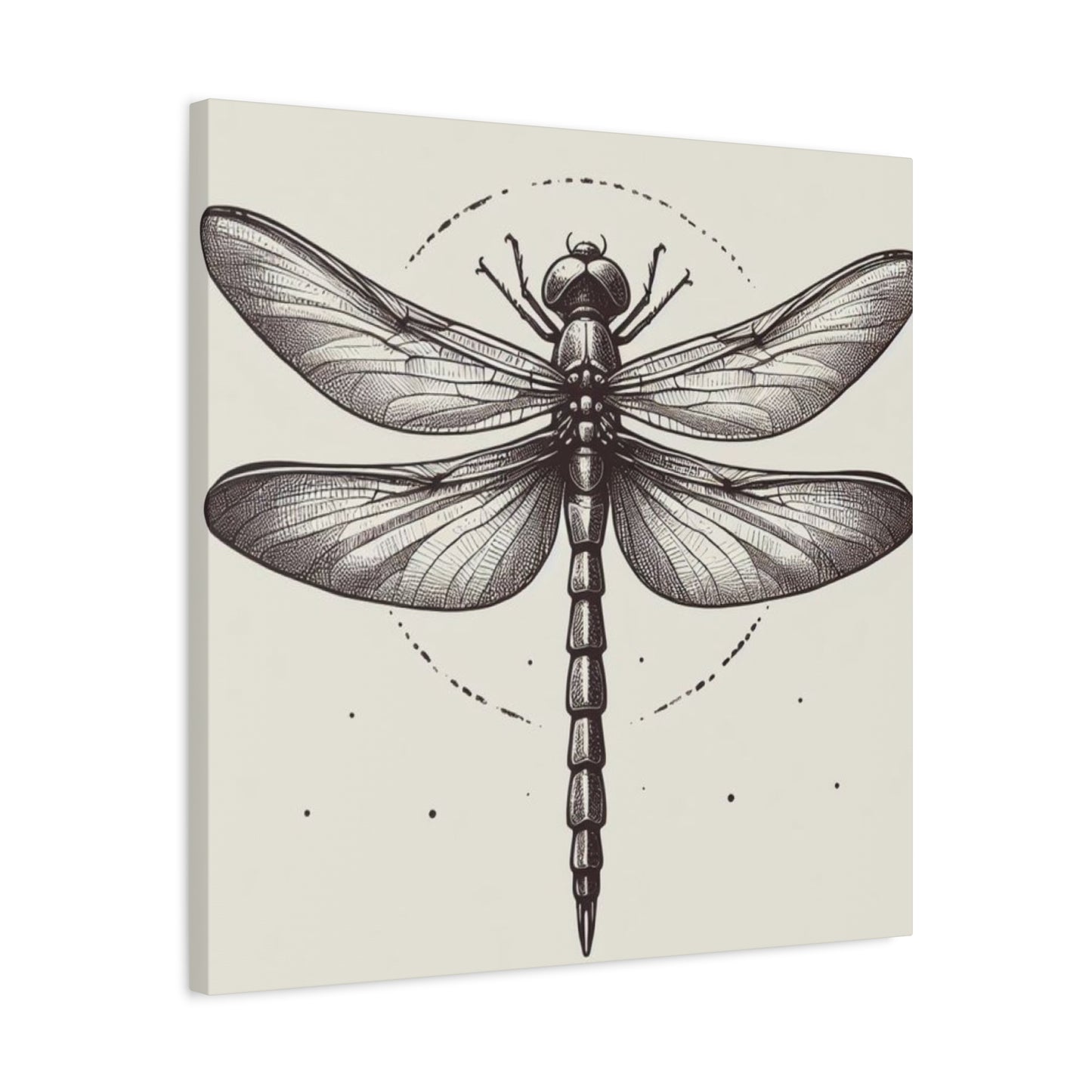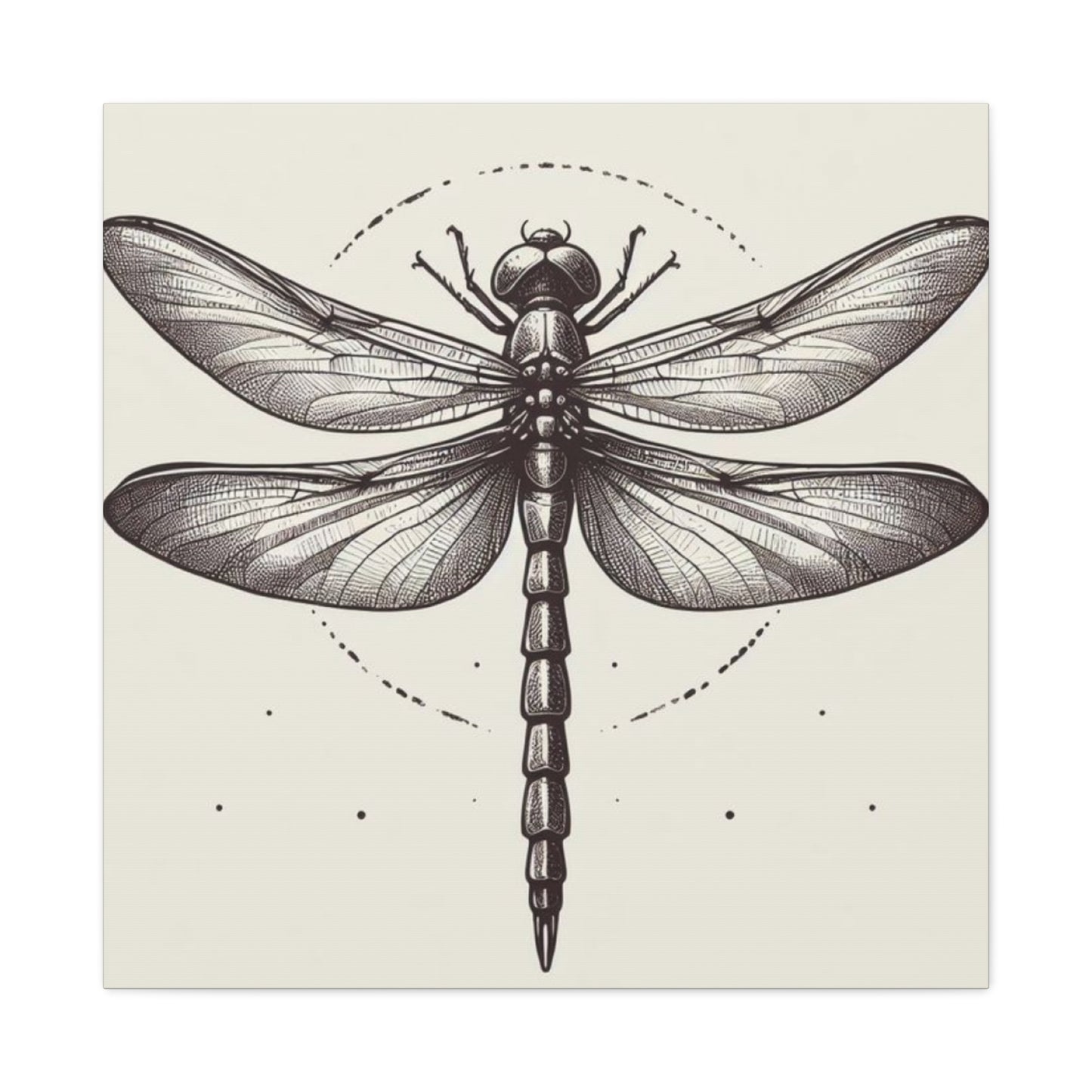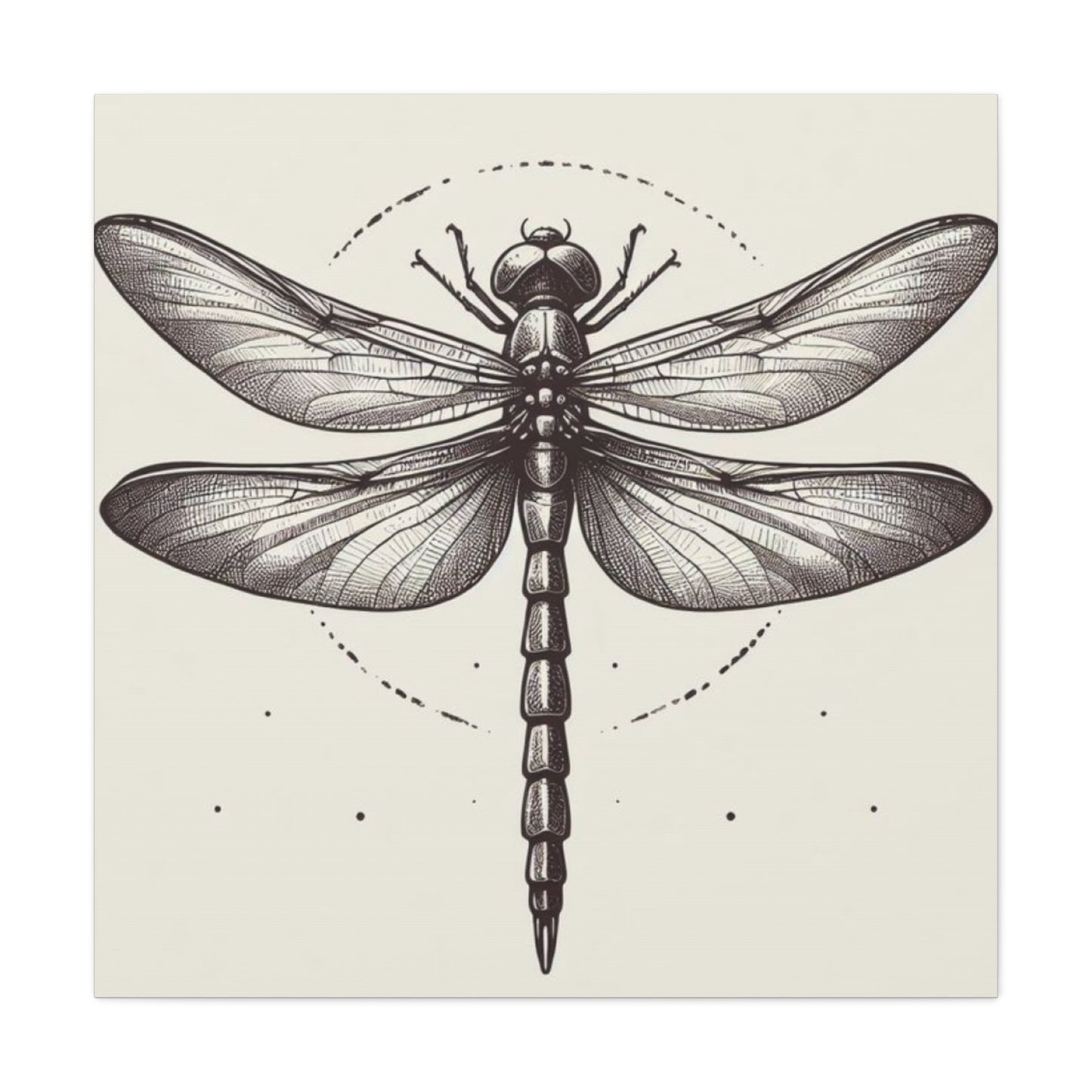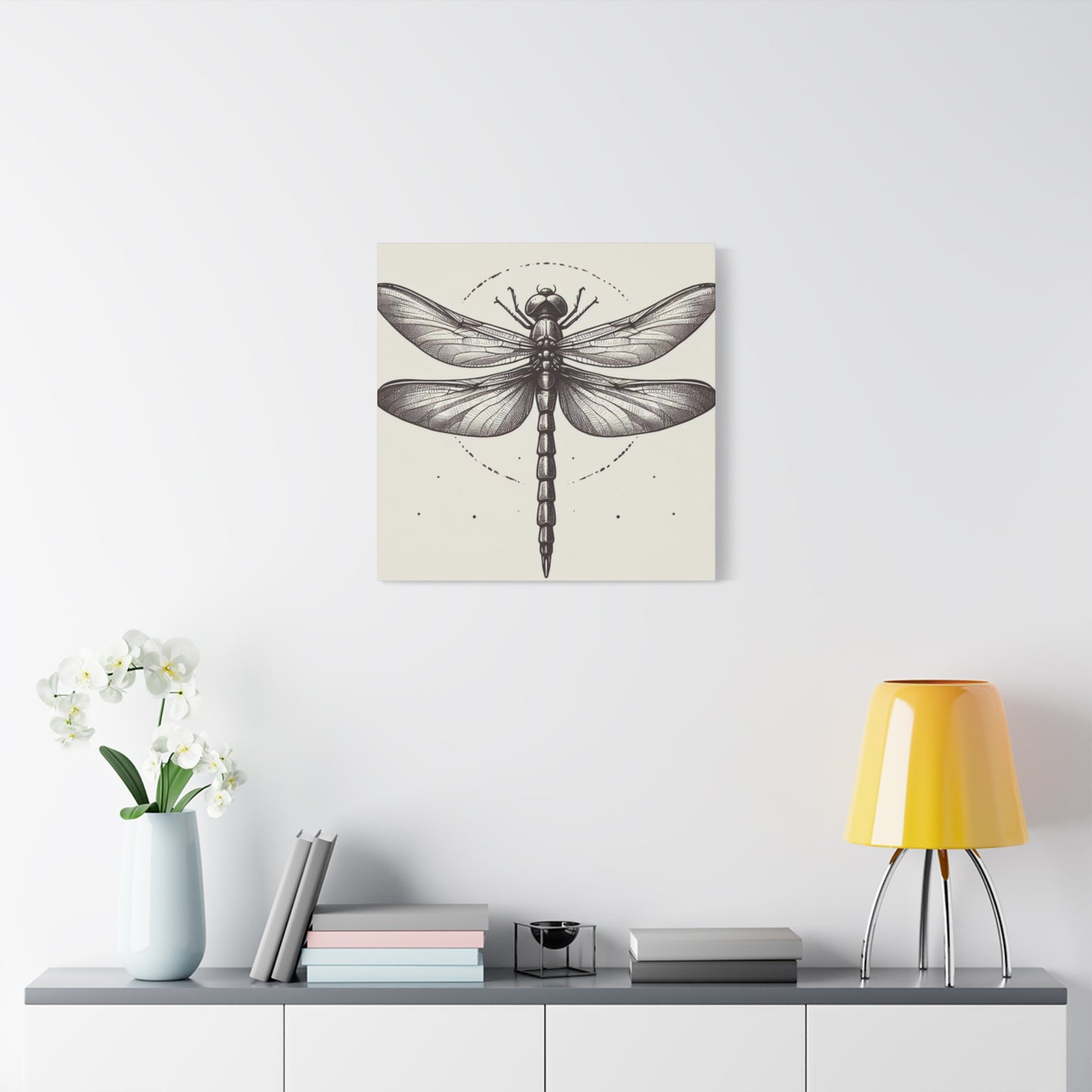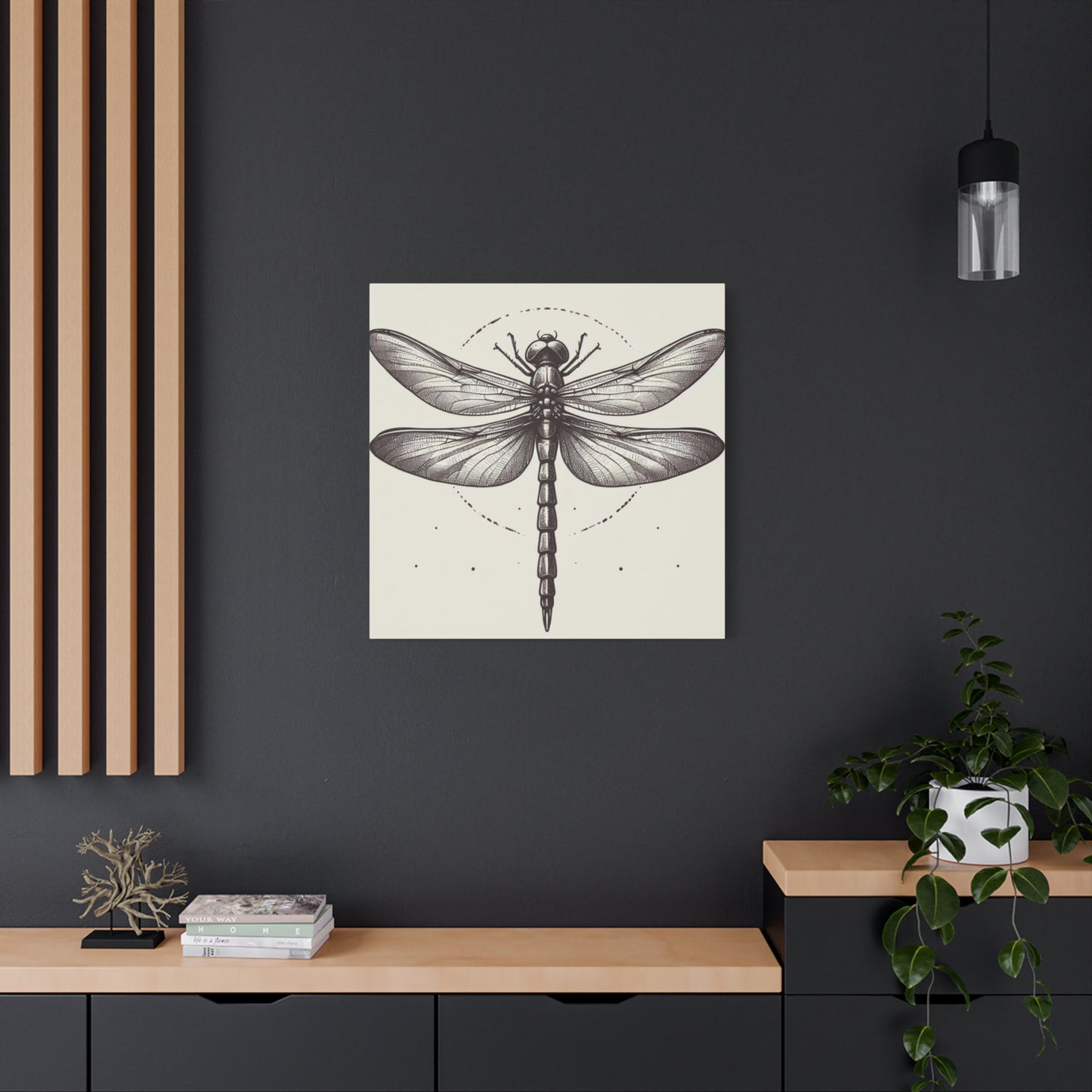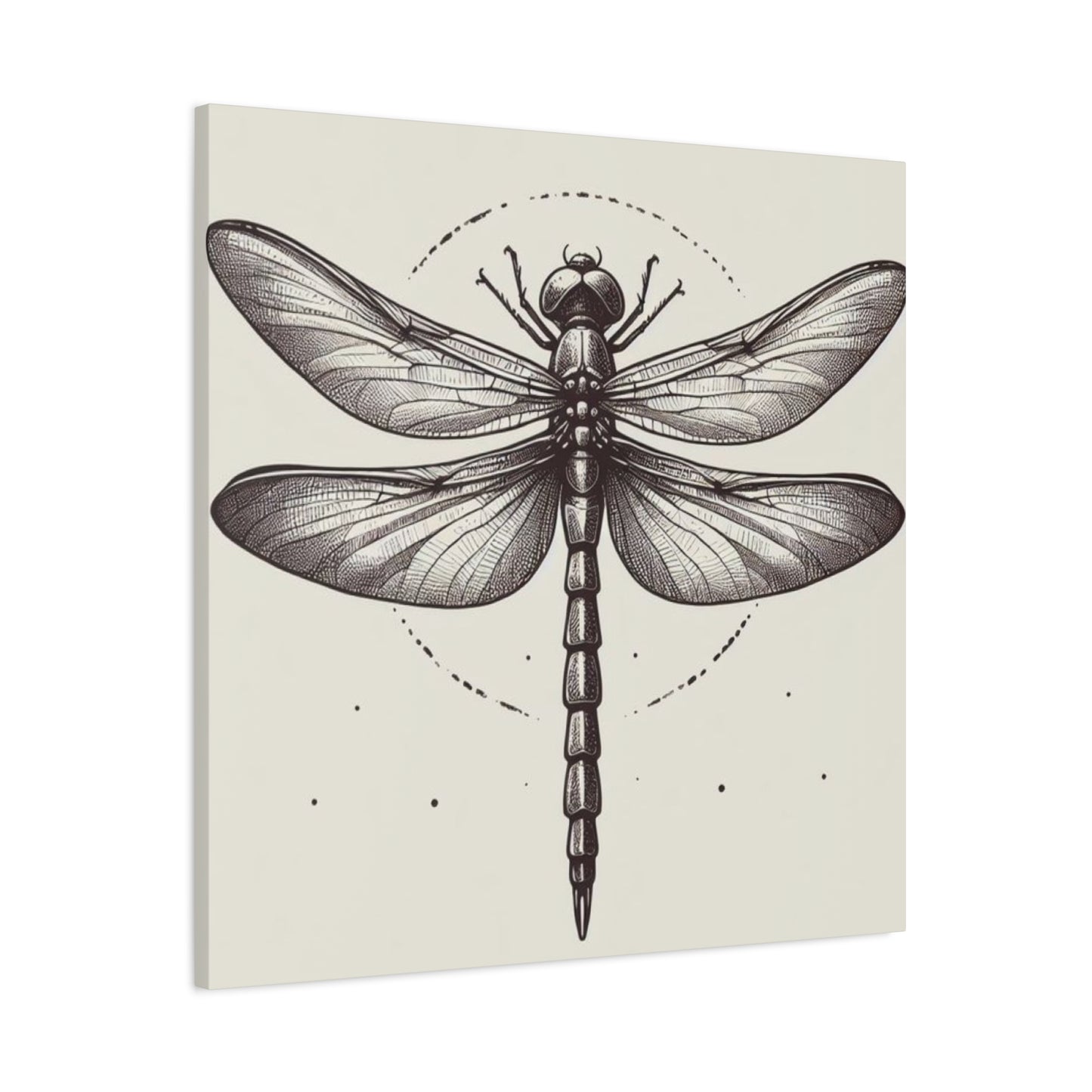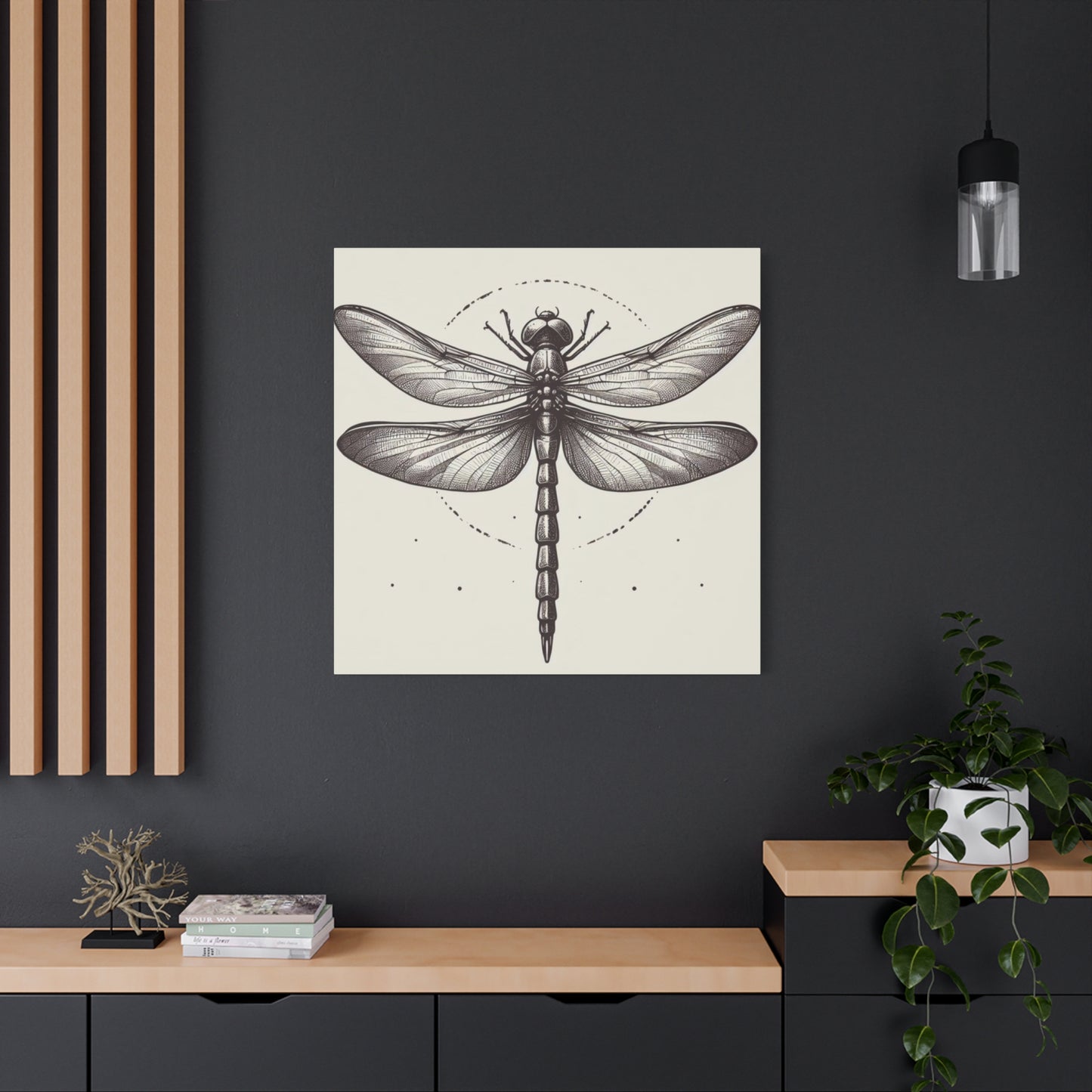Decorating Your Bedroom with Vintage Dragonfly Wall Art: Tips for a Calm and Elegant Space
The enchanting presence of dragonflies has captivated artists and nature enthusiasts for centuries, making these delicate winged creatures a beloved subject in decorative artwork. When combined with the charm of aged aesthetics, dragonfly imagery creates a sophisticated visual statement that bridges the gap between natural beauty and artistic expression. This timeless approach to home decoration offers an elegant solution for those seeking to infuse their living spaces with character, depth, and a connection to the natural world.
The appeal of incorporating these winged insects into interior design extends far beyond simple decoration. These pieces carry historical significance, artistic merit, and symbolic meaning that resonates with collectors and casual decorators alike. Whether displayed in a cozy living room, a professional office environment, or a tranquil bedroom retreat, dragonfly artwork brings a sense of refinement and natural wonder to any setting.
Nature-Inspired Vintage Dragonfly Wall Art
The intersection of natural history and artistic interpretation has produced some of the most captivating decorative pieces available to interior design enthusiasts. Dragonfly imagery rooted in naturalistic traditions draws inspiration from the actual beauty of these insects, capturing their intricate wing patterns, elongated bodies, and graceful proportions with remarkable precision. Artists who specialize in this genre often study actual specimens, historical scientific illustrations, and classical art movements to create works that feel both authentic and aesthetically pleasing.
These nature-inspired pieces typically feature muted color palettes reminiscent of aged paper, antique textiles, or weathered natural materials. Earthy tones such as sepia, sage green, dusty blue, and warm cream dominate these compositions, creating a soothing visual experience that complements a wide range of interior color schemes. The artistic approach often mimics the style of naturalist drawings from the eighteenth and nineteenth centuries, when scientific accuracy and artistic beauty were seamlessly integrated.
The creation process for such artwork often involves careful attention to botanical and entomological accuracy. Artists may reference historical collections, museum specimens, or contemporary nature photography to ensure their representations capture the essence of these creatures. Wing venation patterns, body segmentation, and proportional relationships are rendered with meticulous care, resulting in pieces that appeal to both nature lovers and art collectors.
Many contemporary artists working in this style employ traditional techniques such as watercolor painting, pen and ink illustration, or etching to achieve an authentic period feel. These methods produce organic textures and subtle variations in tone that digital reproduction alone cannot fully capture. The slight imperfections and handcrafted quality add to the overall charm and perceived value of the finished pieces.
When selecting nature-inspired dragonfly artwork for your space, consider how the scientific accuracy and artistic interpretation balance in each piece. Some works lean heavily toward scientific illustration, with precise anatomical detail and minimal artistic embellishment. Others take a more interpretive approach, using the dragonfly form as a starting point for creative expression while maintaining recognizable natural characteristics.
The versatility of nature-inspired dragonfly art makes it suitable for various decorating approaches. In spaces with a strong natural theme, these pieces reinforce connections to the outdoors and complement organic materials like wood, stone, and natural fibers. In more eclectic settings, they serve as intriguing focal points that add unexpected visual interest and conversation-starting appeal.
The Allure of Antique Dragonfly Illustrations
Historical illustrations of dragonflies possess a distinctive character that modern reproductions often attempt to emulate but rarely fully capture. Genuine antique representations from the Victorian era, Edwardian period, or early twentieth century carry the marks of their time, including printing techniques, paper aging, and artistic conventions that give them unmistakable authenticity. These original works were often created for scientific publications, natural history volumes, or decorative print portfolios intended for educated collectors.
The artistic conventions of different historical periods significantly influenced how dragonflies were depicted. Victorian scientific illustrations emphasized precise anatomical detail, often presenting multiple views of a single specimen including dorsal, ventral, and lateral perspectives. Artists employed techniques like chromolithography, steel engraving, and hand-colored etching to produce images of remarkable clarity and beauty. These works served both educational and aesthetic purposes, adorning the libraries and studies of naturalists, physicians, and educated gentlefolk.
Edwardian period illustrations often displayed a softer, more decorative approach compared to their Victorian predecessors. Art Nouveau influences became apparent in flowing lines, organic compositions, and ornamental border treatments. Dragonflies appeared in contexts beyond pure scientific documentation, featuring in decorative arts, textile patterns, and architectural ornamentation. This era saw these insects celebrated not merely as biological subjects but as symbols of grace, transformation, and natural beauty.
Early twentieth century modernist movements brought new perspectives to nature illustration. Artists began experimenting with simplified forms, bold color contrasts, and abstract interpretations while still maintaining recognizable dragonfly characteristics. These pieces often reflected the optimism and forward-looking spirit of their time, presenting familiar natural subjects through innovative visual languages.
Collectors prize authentic antique dragonfly illustrations for several reasons beyond mere age. The craftsmanship evident in hand-colored prints, the quality of period printing techniques, and the historical significance of the publications they originally appeared in all contribute to their value. Additionally, the natural aging process creates unique patina effects that cannot be artificially replicated, including subtle color shifts, paper oxidation, and delicate foxing marks that tell the story of the piece's journey through time.
Dragonflies in Vintage Botanical Art
The incorporation of dragonflies within the broader context of botanical artwork represents a sophisticated approach to natural history illustration. These compositions typically feature the insects alongside flowers, grasses, reeds, or aquatic plants, creating ecologically accurate scenes that showcase the dragonfly's natural habitat. This integrated approach reflects the historical understanding that nature exists as an interconnected system rather than a collection of isolated specimens.
Traditional botanical artists who included dragonflies in their compositions were often influenced by Asian artistic traditions, particularly Chinese and Japanese painting styles that emphasized harmony between different natural elements. These Eastern influences introduced Western artists to compositional principles that balanced negative space, suggested movement, and created visual narratives within single images. The result was artwork that felt both scientifically informative and aesthetically sophisticated.
The botanical context provides important visual information about dragonfly ecology and behavior. Depicting these insects near water lilies, cattails, or marsh grasses immediately communicates their aquatic lifecycle and habitat preferences. Showing them in flight among meadow flowers suggests their role as predators in open field ecosystems. These contextual clues add layers of meaning that purely specimen-focused illustrations lack.
Color harmonies in botanical dragonfly art often demonstrate sophisticated understanding of natural color relationships. Artists carefully observed how the iridescent blues and greens of dragonfly bodies contrast or complement the various hues found in flowers and foliage. These studied color relationships create visually pleasing compositions that work effectively as decorative art while maintaining scientific accuracy.
Mixing Modern and Vintage Dragonfly Canvases
Creating dynamic visual interest through the combination of contemporary and period-inspired dragonfly artwork requires careful consideration of several design elements. This eclectic approach allows for personal expression while maintaining cohesive aesthetic appeal. The key lies in identifying unifying factors that allow disparate pieces to coexist harmoniously within a shared space.
Color coordination serves as one of the most effective tools for integrating mixed-era dragonfly art. Selecting pieces that share a common color palette, even if their styles differ dramatically, creates visual continuity that helps the eye move smoothly from one work to another. For example, pairing a sepia-toned scientific illustration with a contemporary canvas featuring similar earth tones establishes immediate visual connection despite their different origins.
Scale variation adds sophistication to mixed-style displays. Combining a large modern abstract interpretation with several smaller traditional prints creates a gallery wall arrangement that feels intentionally curated rather than randomly assembled. The size contrast establishes hierarchy and focal points while allowing each piece to maintain its individual character.
Framing choices significantly impact how well different styles work together. Consistent frame styling can unify diverse artwork, while varied frames might enhance an eclectic aesthetic if carefully selected. Matching frame colors, similar profiles, or coordinated mat treatments help disparate pieces feel like part of a cohesive collection. Conversely, deliberately mixing frame styles can work when the artwork itself shares strong common elements.
Thematic consistency provides another avenue for successful style mixing. Focusing on a specific aspect of dragonfly imagery, such as wing detail studies, flight poses, or aquatic habitat scenes, allows for style variation while maintaining conceptual unity. This approach lets you explore different artistic interpretations of a common theme, creating an intellectually engaging display.
Arrangement strategy determines the overall impact of mixed-style dragonfly art. Formal, symmetrical layouts tend to emphasize the individual qualities of each piece, highlighting their differences. Asymmetrical, organic arrangements can make style variations feel more natural and less deliberate. Consider the architectural features of your space when deciding which approach best suits your needs.
Lighting plays a crucial role in how mixed-style artwork reads visually. Consistent lighting across all pieces helps unify them, while strategic spotlighting can emphasize key works and create intentional focal points. Pay attention to how natural light interacts with different mediums throughout the day, as oil paintings, watercolors, and canvas prints each respond differently to changing light conditions.
The Story Behind Vintage Dragonfly Artwork
The historical significance of dragonfly imagery extends far beyond simple decorative appeal, encompassing cultural symbolism, scientific discovery, and artistic evolution. Understanding these deeper narratives enriches appreciation for the artwork and adds layers of meaning to its presence in contemporary spaces. Each piece carries echoes of the attitudes, knowledge, and aesthetic values of its creation period.
In many Asian cultures, particularly Japanese tradition, dragonflies held symbolic importance representing courage, strength, and happiness. Samurai warriors adopted dragonfly motifs on their armor and weapons, viewing these insects as emblems of victory because they fly only forward, never retreating. This cultural significance influenced artistic representation, with dragonflies appearing frequently in ukiyo-e prints, textile designs, and decorative objects. Western artists encountering these Eastern traditions during periods of increased cultural exchange incorporated some of these symbolic associations into their own work.
European natural history traditions approached dragonflies primarily through scientific curiosity. The development of microscopy and improved optical instruments during the seventeenth and eighteenth centuries allowed detailed observation of dragonfly anatomy previously impossible to study. Artists collaborated with naturalists to document these discoveries, creating illustrations that served both scientific and aesthetic purposes. These collaborative efforts resulted in some of the most beautiful and accurate natural history plates ever produced.
The Victorian era saw particular fascination with insect study as both scientific pursuit and fashionable hobby. Wealthy collectors assembled specimen cabinets, subscribed to illustrated natural history publications, and participated in amateur naturalist societies. Dragonflies, with their large size, varied colors, and dramatic wing structures, became popular collecting subjects. This widespread interest created demand for quality illustrations and decorative items featuring these insects, spurring production of prints, paintings, and applied art objects.
Art Nouveau movement at the turn of the twentieth century elevated dragonflies from scientific subjects to artistic icons. Designers like René Lalique created exquisite jewelry incorporating dragonfly forms, while architects and interior designers used dragonfly motifs in architectural ornamentation and decorative panels. This artistic movement celebrated natural forms and flowing lines, finding in dragonflies perfect exemplars of nature's elegant design principles.
Dragonfly Art: A Vintage Collector's Dream
The pursuit of collecting dragonfly-themed artwork offers rewards beyond simple decoration, providing opportunities for historical research, aesthetic refinement, and connection with like-minded enthusiasts. Serious collectors develop expertise in distinguishing quality pieces, understanding market values, and building cohesive collections that reflect personal vision while respecting the art form's traditions.
Authenticating genuinely old dragonfly prints requires knowledge of period printing techniques, paper characteristics, and stylistic conventions. Original nineteenth century chromolithographs display specific qualities including hand-applied color registration marks, particular paper textures consistent with period manufacturing, and wear patterns authentic to their age. Learning to recognize these characteristics helps collectors avoid modern reproductions marketed as antiques and ensures the historical integrity of their collections.
Print condition significantly affects both aesthetic appeal and collectible value. Pristine examples with bright colors, clean margins, and minimal damage command premium prices, but sometimes modest imperfections add character without substantially diminishing worth. Collectors must decide whether they prioritize investment potential or decorative appeal, as these priorities sometimes suggest different acquisition strategies.
Provenance research adds fascinating dimensions to collecting. Tracing a print's ownership history, discovering which publication it originally appeared in, or identifying the specific artist and engraver involved transforms a simple picture into a artifact with documented historical connections. This investigative aspect appeals to collectors who enjoy research as much as visual appreciation.
Building a thematically coherent collection requires strategic focus. Some collectors concentrate on works from specific time periods, acquiring representative examples from Victorian, Edwardian, or early modern eras. Others focus on particular artistic styles such as scientific illustrations, decorative arts, or modernist interpretations. Still others might collect works by specific artists or from particular publications. These focused approaches create collections with internal logic and scholarly value.
Vintage-Inspired Dragonfly Prints for Living Rooms
Living rooms serve as primary gathering spaces where personal style makes its most public statement, making artwork selection particularly important for these areas. Dragonfly imagery in period-inspired styles brings sophistication, natural beauty, and conversation-starting appeal to these central living spaces. Thoughtful selection and placement ensure these pieces enhance rather than overwhelm the room's overall design.
Scale considerations prove crucial in living room contexts where furniture arrangements and architectural features create defined visual zones. Large-scale dragonfly canvases work effectively above sofas or fireplaces, anchoring seating areas and establishing focal points. Medium-sized pieces suit wall spaces between windows or flanking architectural features. Smaller works cluster effectively in gallery arrangements or occupy niche spaces that might otherwise remain empty.
Color relationships between dragonfly artwork and existing room elements determine visual harmony. Pieces featuring colors that echo upholstery, throw pillows, or area rugs create pleasing coordination without demanding exact matching. Alternatively, artwork in contrasting tones adds dynamic energy to neutral spaces or provides visual relief in rooms with bold color schemes. Consider undertones as well as obvious hues, ensuring warm-toned artwork complements warm interiors and cool pieces suit cool environments.
Stylistic consistency between furniture period and artwork aesthetics creates cohesive design statements. Traditional living rooms with classic furniture styles naturally accommodate scientifically detailed dragonfly prints reminiscent of natural history publications. Spaces with cottage or farmhouse aesthetics pair beautifully with softer, more romantic interpretations. Contemporary living rooms can embrace either approach, using period-style dragonfly art to add warm contrast or selecting streamlined pieces that maintain modern sensibilities.
Lighting significantly impacts how dragonfly artwork appears in living room settings. Natural light from windows can beautifully illuminate these pieces during daytime hours but may cause fading if exposure is excessive or unfiltered. Artificial lighting options include picture lights mounted directly to frames, track lighting directed at wall displays, or strategically positioned floor and table lamps that illuminate artwork while providing ambient room lighting. Consider how pieces look under different lighting conditions before finalizing placement.
Creating a Rustic Vibe with Dragonfly Wall Art
Rustic interior design celebrates natural materials, handcrafted character, and connection to traditional ways of living, making it particularly receptive to nature-inspired dragonfly imagery. Successfully integrating these pieces into rustic spaces requires attention to material authenticity, color relationships, and the overall balance between refined artistry and casual comfort that defines successful rustic design.
Material selection for frames and mounting significantly impacts how dragonfly art reads within rustic contexts. Reclaimed wood frames with visible grain, weathered finishes, and occasional imperfections complement rustic aesthetics far better than pristine modern frames. Barn wood, driftwood, or intentionally distressed finishes create immediate visual harmony with other rustic elements. Hardware with aged metal finishes such as bronze, copper, or wrought iron continues the authentic material theme.
The color palette of rustic dragonfly art should emphasize earth tones and natural hues. Sepia, warm browns, forest greens, and muted blues echo the colors of aged wood, stone, and natural landscapes that dominate rustic interiors. Avoiding overly bright or obviously synthetic colors maintains the organic feeling essential to successful rustic design. Pieces that appear naturally aged or deliberately antiqued integrate more seamlessly than those with pristine, contemporary coloration.
Texture plays a vital role in rustic aesthetics, suggesting opportunities to select dragonfly art with tactile interest. Canvas substrates, textured paper, or pieces that incorporate actual natural materials add dimensional quality that engages multiple senses. Avoiding overly smooth, glossy finishes in favor of matte or slightly textured surfaces reinforces rustic sensibilities.
The Perfect Gift: Vintage Dragonfly Canvas Prints
Selecting meaningful gifts requires consideration of recipient preferences, lifestyle, and personal aesthetic, making dragonfly artwork a versatile option suitable for diverse individuals. The universal appeal of natural beauty combined with the timeless quality of period-inspired styles creates gifts that feel both thoughtful and sophisticated, appropriate for various occasions and relationships.
Understanding the recipient's existing decor helps ensure the gift integrates successfully into their living space. Observing their color preferences, furniture styles, and overall design approach during previous visits provides valuable guidance. Photographs of their home, if available, offer reference points for selecting appropriately scaled and styled pieces. When detailed knowledge of their decor is unavailable, choosing more neutral period styles and classic color palettes increases the likelihood of successful integration.
Life events often suggest appropriate dragonfly imagery symbolism. New home celebrations might emphasize dragonflies' associations with new beginnings and positive change. Wedding gifts could highlight themes of transformation and partnership. Retirement presents might reference dragonflies' symbolism of living in the moment and embracing life's changes. Thoughtfully aligning symbolic meaning with the occasion adds layers of significance beyond mere decorative value.
Personal interests and hobbies provide another avenue for meaningful selection. Nature enthusiasts, gardeners, and outdoor lovers naturally appreciate authentic natural history subjects. Those interested in history, antiques, or vintage aesthetics respond to period-appropriate styles and reproduction prints. Artists and creative individuals might particularly value pieces demonstrating exceptional craftsmanship or unusual artistic approaches.
Vintage Dragonfly Art in Bohemian Interiors
Bohemian design philosophy embraces eclecticism, personal expression, and global influences, creating spaces that feel curated, traveled, and richly layered. Dragonfly imagery fits naturally into these environments, contributing organic beauty and natural world connections that complement boho's celebration of nature and handcrafted objects. Successfully incorporating these pieces into bohemian spaces requires understanding the style's underlying principles and applying them to artwork selection and display.
Color relationships in bohemian spaces tend toward richness and complexity, welcoming dragonfly art in jewel tones, warm earth colors, or even unexpected palette combinations. The layered quality characteristic of boho design means dragonfly pieces need not match existing colors exactly but should contribute to the overall chromatic richness. Pieces featuring multiple colors or complex color relationships often integrate more successfully than strictly monochromatic options.
The bohemian appreciation for global influences suggests opportunities to incorporate dragonfly imagery from various cultural traditions. Japanese-inspired prints reflecting that culture's historical reverence for these insects complement Asian textiles, ceramics, or architectural elements. European natural history illustrations pair well with collected travel souvenirs or vintage findings from continental sources. Mixing these various influences creates the culturally rich atmosphere bohemian design celebrates.
Texture and material variety enhance bohemian interiors, suggesting display strategies that emphasize dragonfly art's physical qualities. Layering framed pieces against textiles, displaying canvases on ornately carved easels, or mixing artwork with dimensional objects creates the tactile richness boho spaces require. Avoiding uniform, gallery-style hanging in favor of more organic, varied placement reinforces the casual, collected-over-time feeling central to successful bohemian design.
Dragonfly Prints: From Vintage to Contemporary
The evolution of dragonfly representation across different artistic periods reflects broader changes in art movements, scientific understanding, and cultural attitudes toward nature. Tracing this development provides fascinating insights into how a single subject can be interpreted through dramatically different aesthetic lenses while maintaining its essential appeal. Understanding this evolution helps collectors and decorators make informed choices that align with personal taste and design objectives.
Early scientific illustrations from the seventeenth and eighteenth centuries approached dragonflies with wonder and meticulous documentation. Artists working during this period often depicted insects larger than life, revealing anatomical details invisible to casual observation. These early works sometimes included fantastical elements or inaccuracies based on incomplete understanding, lending them peculiar charm modern viewers find appealing. The hand-colored engravings and etchings from this era demonstrate remarkable craftsmanship even when scientific accuracy was approximate.
Nineteenth century natural history illustration reached peaks of both scientific precision and artistic achievement. Improved optical instruments, standardized scientific methodology, and professionalized collaboration between naturalists and artists produced dragonfly illustrations of exceptional quality. Publications aimed at serious collectors and scientific institutions featured chromolithographs and hand-colored plates that balanced rigorous accuracy with genuine beauty. These works set standards against which later interpretations are often measured.
The Arts and Crafts movement and Art Nouveau period transformed dragonflies from purely scientific subjects into decorative motifs. Artists abstracted natural forms, emphasized flowing lines, and incorporated dragonfly imagery into broader design compositions. These interpretations valued aesthetic impact over anatomical precision, using recognizable dragonfly characteristics as elements within larger artistic visions. The resulting works served decorative rather than educational purposes, though many retained considerable naturalistic accuracy.
Early twentieth century modernist movements brought new approaches to nature representation. Some artists simplified dragonfly forms into geometric or stylized shapes, emphasizing essential characteristics while eliminating detail. Others experimented with unusual perspectives, dramatic color choices, or abstract treatments that challenged traditional representation. These explorations expanded the visual vocabulary available for dragonfly imagery while maintaining recognizable connection to the natural subjects.
Mid-century modern design often featured nature subjects including dragonflies in simplified, accessible styles suited to mass production and contemporary interiors. These pieces typically employed clean lines, limited color palettes, and graphic clarity that made them easy to integrate into modern homes. While less detailed than scientific illustrations or as ornate as Art Nouveau examples, these works brought nature imagery to wider audiences through affordability and stylistic compatibility with contemporary design.
DIY Framing Ideas for Vintage Dragonfly Prints
Thoughtful framing transforms dragonfly prints from simple images into finished artworks worthy of prominent display. While professional framing services offer expertise and convenience, creative individuals often enjoy designing custom framing treatments that reflect personal style while protecting valuable prints. Successful DIY framing requires attention to preservation standards, aesthetic considerations, and practical construction techniques.
Material selection begins with understanding archival principles that preserve artwork over time. Acid-free mats prevent chemical damage that causes discoloration and paper degradation. UV-protective glazing filters harmful light wavelengths that cause fading. Archival backing boards provide rigid support without introducing damaging substances. Even budget-conscious framers should prioritize these preservation basics, as shortcuts often lead to damaged prints requiring expensive restoration or replacement.
Frame style selection depends on both the print's character and the intended display location. Victorian scientific illustrations often suit narrow, elegant profiles with dark finishes echoing period furniture. Art Nouveau inspired pieces might favor more ornate moldings with curved profiles. Contemporary interpretations often look best in simple, clean-lined frames that don't compete with the artwork. Bringing print samples when selecting frames helps ensure successful stylistic pairing.
Mat treatment significantly impacts presentation and can either enhance or detract from the print's impact. Single mats create clean, straightforward presentations suitable for modern aesthetics. Double or triple mat layers add sophistication and dimensional interest, with contrasting inner mats creating elegant reveals that draw the eye inward toward the artwork. Mat colors should complement rather than match the print, with neutral tones often working most successfully. Cream, off-white, and warm grays suit aged prints, while cooler grays and pure whites better serve contemporary pieces.
Window opening dimensions require careful calculation. Standard practice leaves equal margins on top and sides with a slightly larger bottom margin, creating optically balanced presentation despite mathematical asymmetry. Oversized mats surrounding relatively small prints create breathing room and emphasize the artwork's importance. Minimal mats allowing the print to dominate work better for large pieces in modest spaces. Measuring accurately and double-checking calculations before cutting prevents costly mistakes.
Dragonflies and Vintage Nature Prints: A Match Made in Heaven
The natural affinity between dragonfly imagery and other period nature prints creates opportunities for cohesive collections and unified decorative schemes. These complementary subjects share aesthetic qualities, historical origins, and symbolic associations that allow them to coexist harmoniously while providing visual variety that prevents monotonous repetition. Understanding these relationships enables assembling collections that feel intentionally curated rather than accidentally assembled.
Botanical prints form perhaps the most natural pairing with dragonfly artwork. Both subjects flourished in the same natural history publications, often appearing together in volumes documenting specific geographic regions or ecosystem types. The delicate linear quality of botanical illustrations complements the similar characteristics of dragonfly anatomy, creating visual harmony through shared artistic approaches. Color palettes in aged botanical and entomological prints typically show similar patinas and tonal qualities, reinforcing their compatibility.
Bird imagery, particularly waterbird species sharing dragonfly habitats, creates ecologically coherent groupings. Herons, kingfishers, and other aquatic birds naturally associate with the marshy, pond-edge environments where dragonflies thrive. Combining these subjects suggests complete ecosystem representation rather than isolated specimen studies. The larger scale of bird prints can provide visual anchor points in arrangements that include smaller dragonfly images.
Other insect subjects expand entomological themes while maintaining stylistic consistency. Butterflies, moths, beetles, and other beautifully colored insects appeared alongside dragonflies in natural history publications, often illustrated by the same artists using identical techniques. Mixing various insect subjects prevents the collection from feeling too narrowly focused while maintaining thematic coherence. The variety of forms, colors, and sizes among different insect orders provides rich visual diversity within unified natural history context.
Aquatic plant illustrations complement dragonfly subjects through habitat association. Water lilies, cattails, reeds, and submerged vegetation all connect directly to dragonfly ecology and lifecycle. These plants provide egg-laying sites, nymph habitat, and emergence platforms essential to dragonfly survival. Displaying aquatic plant prints with dragonfly artwork creates educational narratives about ecosystem relationships while achieving aesthetic harmony through shared subject matter.
Shell and marine life prints introduce different textural and formal qualities while maintaining natural history cohesion. The careful rendering of shell spirals and surface details demonstrates similar scientific precision and artistic skill as dragonfly illustration. While representing different environments, these subjects share the historical context of naturalist exploration and documentation. Their often lighter color palettes can provide visual relief in collections dominated by darker-toned pieces.
Top Vintage Dragonfly Art Styles to Collect
Navigating the diverse range of historical dragonfly art styles requires understanding the distinctive characteristics, relative availability, and aesthetic qualities that define each approach. Building knowledge of these categories helps collectors make informed decisions aligned with personal taste, budget constraints, and long-term collection goals. Each style offers unique appeal and presents different opportunities and challenges for enthusiasts.
Scientific plate illustrations from natural history publications represent perhaps the most historically significant category. These works prioritized anatomical accuracy and educational value, often showing multiple views of single species or comparing related species side by side. The finest examples combine rigorous scientific precision with genuine artistic beauty, making them treasured by both natural history enthusiasts and art collectors. Original plates from prestigious nineteenth century publications command premium prices, though quality reproductions make this style accessible to collectors at various budget levels.
Chromolithographic prints demonstrate technical achievement and artistic ambition. This color printing process, popular from the mid-nineteenth through early twentieth centuries, produced vibrant, detailed images through multiple stone impressions. The best chromolithographs show remarkable color accuracy and subtle tonal gradations. Collecting original chromolithographs requires expertise in authentication, as condition issues and later reproductions complicate identification. Learning to recognize authentic examples through paper characteristics, printing qualities, and period-appropriate wear patterns proves essential.
Hand-colored engravings and etchings predate chromolithography and possess distinctive character. Artists applied watercolor or gouache to printed outlines, creating unique pieces where no two examples appear identical. The slight variations in hand-coloring add charm and individuality that mechanically printed works lack. These pieces often show the delicate linework and precise draftsmanship that made engraving such a respected art form. Collectors value examples with strong, even color application and minimal fading or damage.
Art Nouveau decorative prints transformed dragonflies into stylized design elements. These works emphasized flowing lines, organic forms, and ornamental compositions over scientific accuracy. The sinuous curves and elegant simplification characteristic of this movement created highly recognizable aesthetic. Genuine period Art Nouveau dragonfly prints can be scarce and valuable, though the style's enduring popularity has inspired numerous later interpretations. Distinguishing authentic period pieces from revival works requires knowledge of artists, publishers, and dating techniques.
Incorporating Vintage Dragonfly Prints in Office Spaces
Professional environments benefit from thoughtfully selected artwork that enhances atmosphere while maintaining appropriate tone and avoiding distraction. Dragonfly prints in period styles bring natural beauty, intellectual sophistication, and conversation-starting appeal to offices without the formality of traditional corporate art or the casualness that might undermine professional credibility. Strategic selection and placement create environments that feel both polished and personally meaningful.
Scale appropriateness matters particularly in office settings where artwork should enhance rather than dominate work areas. Large pieces work well in reception areas, conference rooms, or behind desks where they establish focal points without interfering with tasks. Smaller works suit individual offices or workstations where they provide visual interest during brief mental breaks without becoming overwhelming. Medium-sized pieces offer versatility for various office configurations and can be arranged individually or grouped depending on available wall space.
Color selection should consider the office's overall palette and the psychological effects different hues produce. Muted earth tones create calm, focused atmospheres suitable for concentration-intensive work. Richer colors add energy and visual interest appropriate for creative fields or collaborative spaces. Avoiding overly bright or aggressively contrasted pieces maintains professional atmosphere while still providing aesthetic appeal. Coordinating artwork tones with existing office furnishings creates cohesive environments that feel intentionally designed.
Subject complexity influences how well dragonfly prints function in working environments. Highly detailed scientific illustrations reward close examination but may prove distracting during tasks requiring sustained focus. Simplified or more abstract interpretations provide visual interest without demanding attention, making them suitable for walls within direct sightlines of work areas. Balancing aesthetic appeal with practical consideration of worker attention patterns optimizes both beauty and functionality.
Framing quality reflects organizational standards and professional image. Well-executed, consistent framing throughout office spaces communicates attention to detail and quality consciousness that extends to business practices. Inexpensive or poorly executed framing suggests lack of care that may unconsciously influence client perceptions. Investing in proper presentation for office artwork demonstrates the same commitment to excellence that businesses ideally bring to their core work.
Placement strategy considers traffic patterns, sightlines, and functional requirements of different office zones. Reception areas accommodate artwork that makes immediate positive impressions on visitors while remaining visible during waiting periods. Conference rooms benefit from pieces that provide visual interest without competing with presentations or discussions. Private offices allow for more personal selections reflecting individual taste while maintaining professional boundaries. Common areas and hallways utilize artwork to enliven spaces that might otherwise feel purely utilitarian.
Why Dragonflies Feature in Vintage Wall Art
The persistent popularity of dragonfly imagery across different artistic periods and cultural contexts reflects multiple factors including aesthetic appeal, symbolic significance, and practical considerations that made these insects attractive subjects. Understanding why dragonflies earned such prominent place in decorative traditions enriches appreciation for the artwork and provides insight into historical attitudes toward nature and beauty.
Visual characteristics make dragonflies inherently compelling artistic subjects. Their elongated, segmented bodies demonstrate elegant proportions and graceful form that artists readily appreciate. The intricate venation patterns of their transparent wings create delicate linear networks that challenge and showcase artistic skill. Their large compound eyes and precise anatomical structures reward careful observation and detailed rendering. The variety of colors displayed by different species provides rich palette options from metallic blues and greens to warm ambers and subtle earth tones.
The dragonfly's association with water and aquatic environments connected them to important symbolic traditions. Water has carried symbolic meaning across virtually all human cultures, representing life, purification, transformation, and the unconscious mind. Dragonflies as water-associated creatures inherited some of these symbolic associations, making them meaningful beyond mere aesthetic appeal. Their dramatic transformation from aquatic nymphs to airborne adults reinforced themes of change, emergence, and transcendence that resonated with viewers.
Practical considerations influenced subject selection for nature artists and publishers. Dragonflies are relatively large insects, making them easier to observe, collect, and illustrate than smaller species requiring magnification. Their robust bodies withstand specimen preparation better than more delicate insects. Their habit of perching frequently allows observation of living specimens in relatively stationary positions. These practical advantages made dragonflies accessible subjects for artists working from both specimens and living observation.
The scientific interest in dragonflies during key periods of natural history illustration drove production of quality artwork. As understanding of insect classification, anatomy, and lifecycle progressed during the eighteenth and nineteenth centuries, dragonflies received significant attention from naturalists. This scientific interest created demand for accurate illustrations serving both educational and reference purposes. Publishers commissioned talented artists to document different species, producing works that balanced scientific utility with aesthetic appeal.
The Vintage Dragonfly: A Symbol of Change and Growth
Beyond their visual appeal, dragonflies carry rich symbolic associations that add layers of meaning to their artistic representations. Understanding these symbolic dimensions enhances appreciation for dragonfly artwork and explains some of its enduring popularity across different cultures and time periods. The creatures' unique lifecycle and behavioral characteristics naturally suggested metaphorical interpretations that resonated with human experiences and philosophical concerns.
The dramatic metamorphosis from aquatic nymph to aerial adult provided perhaps the most powerful symbolic association. This transformation resonated deeply with human experiences of change, growth, and self-realization. The nymph stage represents potential, hidden development, and preparation occurring beneath the surface of awareness. The emergence process symbolizes breakthrough moments when latent capabilities manifest. The adult dragonfly embodies achievement, mastery, and the fulfillment of potential through persistent development.
The dragonfly's mastery of flight suggested symbolic meanings related to lightness, freedom, and transcendence. Their aerial agility and apparent effortlessness in movement represented release from earthbound limitations. In various spiritual traditions, flight metaphorically represents rising above mundane concerns, gaining perspective, or accessing higher states of consciousness. Dragonflies as exceptionally skilled fliers naturally embodied these aspirational qualities.
The association with water connected dragonflies to symbolic meanings related to emotions, intuition, and the unconscious mind. Water in psychological and spiritual symbolism often represents the emotional realm and hidden aspects of self. Dragonflies moving between aquatic and aerial environments symbolize the integration of emotional depth with intellectual clarity, or the balance between feeling and thinking aspects of human nature.
The dragonfly's large, multifaceted eyes suggested symbolic associations with perception, insight, and seeing beyond surface appearances. Compound eyes comprising thousands of individual facets represent multiple perspectives and the ability to perceive reality from many angles simultaneously. This biological characteristic inspired symbolic interpretations related to wisdom, discernment, and the value of maintaining flexible viewpoints rather than rigid singular perspectives.
The relatively brief adult lifespan of many dragonfly species connected them to themes of living fully in the present moment. Unlike insects with longer adult periods, dragonflies emerge, reproduce, and die within compressed timeframes. This brevity reminded observers of mortality and the importance of making the most of available time. The dragonfly's apparent joy in flight and sunlight suggested attitudes of embracing life's pleasures without dwelling on past or future.
Different cultural traditions developed specific symbolic associations reflecting local values and observations. Japanese culture particularly honored dragonflies, associating them with strength, courage, and victory. Samurai warriors valued their characteristics of moving only forward, never backward, seeing this as an admirable approach to conflict and life challenges. Native American traditions often viewed dragonflies as representations of swiftness, illusion, and the connection between different realms of existence.
European medieval and Renaissance periods sometimes viewed dragonflies through religious or moral lenses. Their transformation from water to air occasionally represented spiritual rebirth or the soul's ascension. Their brief adult lives reminded viewers of mortality and the transient nature of earthly existence. These interpretations, while less universally positive than some cultural traditions, still contributed to the insect's significance in Western art and literature.
Modern psychological interpretations emphasize dragonfly symbolism related to personal growth and self-actualization. The transformation metaphor applies to therapeutic processes, life transitions, and intentional personal development. The themes of adaptation, flexibility, and embracing change resonate with contemporary emphasis on psychological resilience and growth mindset. Dragonflies serve as natural symbols for coaching, therapy, and personal development contexts.
Vintage Dragonfly Canvas Prints as Bedroom Decor
Bedrooms require particular consideration when selecting artwork, as these private spaces serve functions ranging from rest and relaxation to personal reflection and intimate connection. Dragonfly imagery in period-inspired styles brings natural beauty, symbolic meaning, and sophisticated aesthetic to sleeping spaces without the clinical coldness of purely modern decor or the excessive busyness that might interfere with tranquility. Thoughtful selection creates bedroom environments that feel personally meaningful while supporting their primary functions.
Color psychology becomes especially important in bedroom contexts where atmosphere significantly impacts relaxation and sleep quality. Dragonfly prints featuring cool blues and greens promote calm and rest through their associations with water, nature, and tranquility. Warmer tones in amber, sepia, or muted red-brown ranges create cozy, nurturing feelings appropriate for intimate spaces. Avoiding overly bright, high-contrast, or energetically stimulating colors maintains the peaceful atmosphere bedrooms require.
Scale selection should consider bedroom dimensions and furniture arrangement. Large statement pieces work well as focal points above beds, though they should relate proportionally to headboard size and not overwhelm the room. Medium-sized works suit walls opposite beds where they provide visual interest when reclining without demanding attention. Smaller pieces can create intimate gallery arrangements on side walls or above dressers and nightstands.
Subject complexity influences how well dragonfly art functions in spaces meant for relaxation. Highly detailed scientific illustrations might engage the mind too actively for optimal sleep environments, though they work well in master bedrooms where reading and other waking activities occur. Softer, more impressionistic interpretations create calmer visual experiences better suited to purely restful spaces. Consider whether the artwork will be viewed primarily during waking hours or if it will remain visible as you drift toward sleep.
Symbolic associations add meaningful dimension to bedroom dragonfly art. The transformation symbolism connects to personal growth and life changes that individuals process during private reflection times. Themes of living in the moment and embracing life's beauty resonate with bedroom functions as spaces for intimate connection and personal renewal. Selecting pieces with symbolic significance that aligns with personal values or current life circumstances makes the artwork feel especially meaningful.
Lighting considerations determine how dragonfly prints appear during both day and evening hours. Natural bedroom lighting tends toward softer qualities than living spaces receive, particularly if window treatments filter direct sun. Evening artificial light from bedside lamps creates warm, intimate illumination quite different from daytime appearance. Selecting artwork that looks appealing under both conditions ensures consistent positive impact. Dimmable lights or multiple light sources allow adjusting illumination to suit different moods and activities.
Placement strategy should consider sightlines from the bed and other key positions. Artwork hung opposite the bed provides focal points for contemplation while reclining but shouldn't be so engaging as to interfere with sleep. Pieces flanking beds or hung on side walls remain visible during waking hours without dominating the resting experience. Artwork positioned where morning light first illuminates it creates positive visual experiences upon waking.
Conclusion:
Vintage dragonfly wall art brings a unique blend of elegance, tranquility, and timeless charm to any bedroom. These artworks celebrate the delicate beauty and graceful form of dragonflies, transforming walls into serene focal points that inspire calm and reflection. Whether rendered in muted vintage tones, soft pastels, or intricate black-and-white illustrations, dragonfly prints add a touch of sophistication and natural wonder, making them perfect for creating a peaceful and restorative bedroom environment.
The appeal of nature-inspired bedroom décor lies in its ability to promote relaxation and mindfulness. Dragonflies, with their delicate wings and effortless flight, symbolize transformation, balance, and self-realization. Incorporating these images into your bedroom allows you to cultivate a calming atmosphere that encourages restful sleep and gentle introspection. By choosing vintage dragonfly art, you combine aesthetic refinement with symbolic meaning, resulting in a space that nurtures both visual pleasure and emotional well-being.
From a design perspective, vintage dragonfly wall art is remarkably versatile. It complements a wide variety of interior styles, from rustic farmhouse and shabby chic to modern minimalism or classic elegance. Large-format canvases can act as striking statement pieces above a bed or dresser, while smaller framed prints can be arranged as gallery walls or combined with botanical or nature-themed artwork. The subdued, vintage-inspired color palettes integrate seamlessly with soft bedding, natural wood furniture, and muted textiles, enhancing the bedroom’s sense of harmony and cohesion.
Beyond aesthetics, these artworks bring emotional and symbolic depth to your space. Dragonflies are often associated with adaptability, transformation, and the beauty of life’s fleeting moments. Placing dragonfly art in your bedroom serves as a subtle reminder to embrace change, live mindfully, and find serenity amidst life’s challenges. It’s an elegant way to integrate meaningful symbolism into your daily environment, elevating the space beyond decoration into a sanctuary of calm and inspiration.
Moreover, the artistic detail in vintage dragonfly prints encourages reflection and appreciation. From intricate wing patterns to graceful postures, these pieces invite the viewer to slow down and notice subtle beauty. This meditative quality enhances the restful and soothing qualities of a bedroom, making the room not only visually appealing but also emotionally restorative. The artwork becomes an anchor for calm, encouraging mindfulness and a deeper connection with nature.
Ultimately, decorating your bedroom with vintage dragonfly wall art transforms the space into a serene retreat that combines elegance, meaning, and natural beauty. It allows you to create an environment that feels both restful and inspiring, where every glance at the wall brings a sense of peace, balance, and refinement.

















